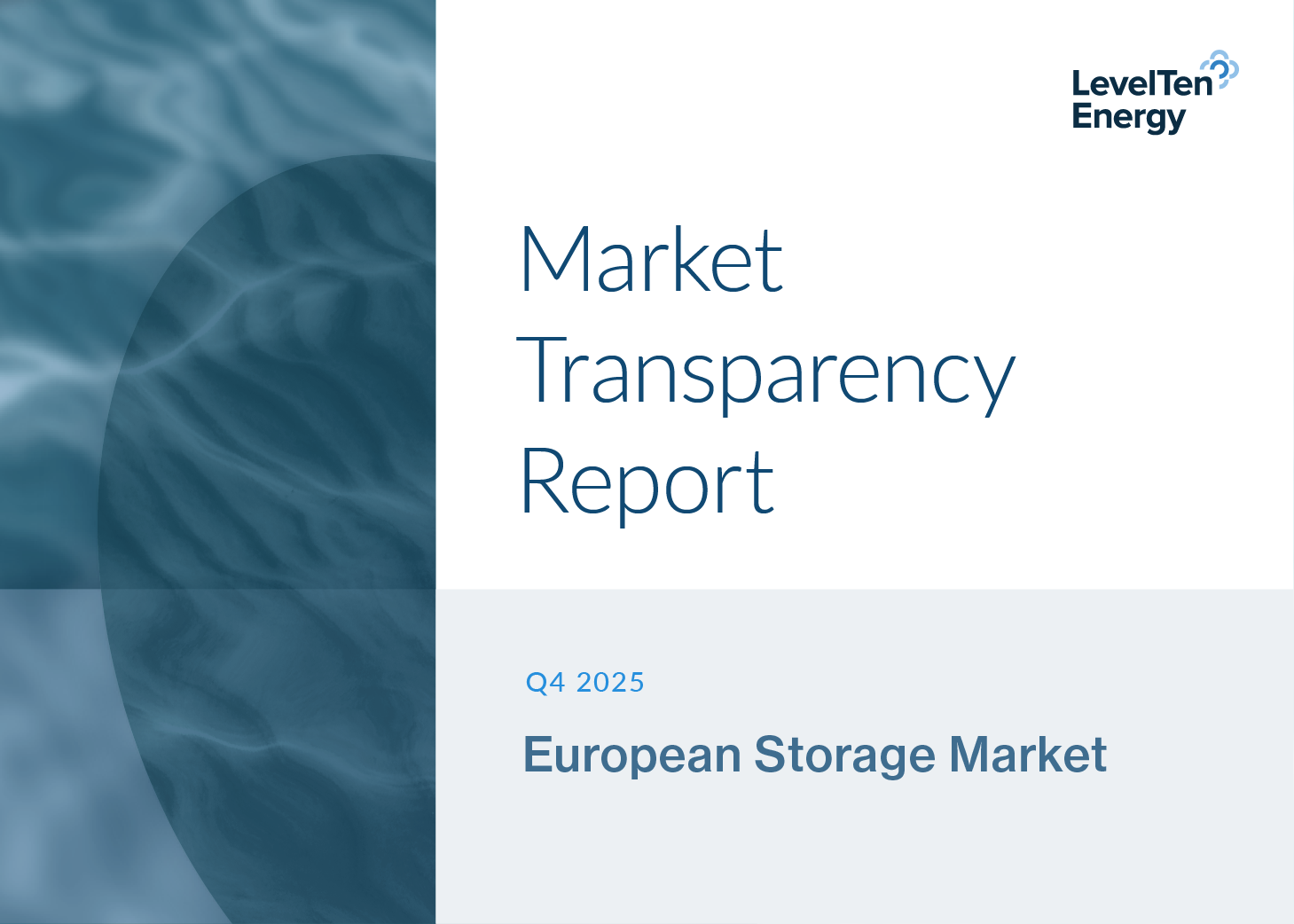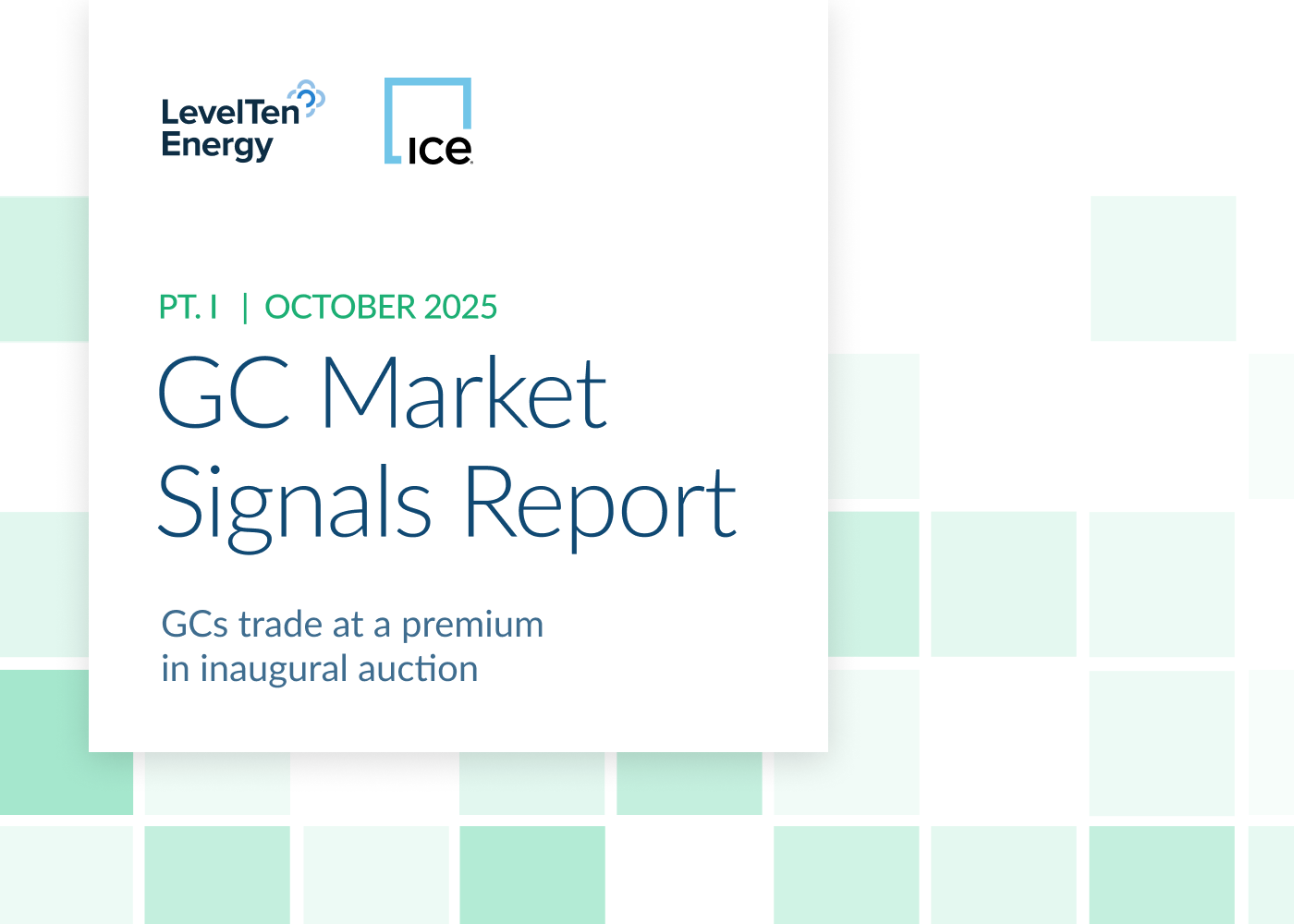Spain’s Fast-Growing Solar Capacity
The last few years have seen a rush across Europe to install new renewable energy capacity as quickly as possible. While all renewable technologies are welcome, not all of them are equally easy to develop, install, and maintain, nor do they all have the same cost of generation. For many reasons, we have seen wind development lagging behind solar — the latter of which has skyrocketed in terms of installed capacity. Figure 1, showing the evolution of installed solar capacity in Spain, illustrates this trend.

It should be noted that the above graph shows only utility-scale solar installments. Behind-the-meter solar capacity (for self-consumption) is now over 5 GW. This additional capacity plays a role in the solar price cannibalization we’ll speak on shortly.
Market Impacts
Logically, all of this new renewable capacity has an impact on the electricity system and market. This April, solar in Spain has exhibited the intense price cannibalization that is expected to occur even more over the coming years.
One major characteristic of solar is the simultaneity of its generation. Regions are typically under the effects of broad low or high pressure weather systems (squalls & anticyclones), so when it is sunny in one place, it is typically also sunny across vast neighboring areas. Translated to energy, this means if a solar power plant is generating, all the solar power plants in the vicinity are likely generating as well. All this simultaneous solar generation of course provides a lot of power at once, which can drive down the price of electricity during that time due to an excess of supply. This tendency for excess solar generation to reduce the capture price of solar electricity during high production hours creates a price cannibalization effect.
April in Spain brings mild temperatures and moderate electricity demand. During this time of the year, the country’s fast-growing solar capacity has already started to kick in. There have been days this past April — mostly Sundays — during which the market price for electricity was <1€/MWh for periods of as much as eight hours due to vast amounts of low-cost solar generation flooding onto the grid in periods of low demand. Figure 2 is an example of one such day.

This situation has repeated itself all month long, and has received a lot of attention on social media, from energy professionals, and even in the mainstream media. But curiously enough, the vast majority of those comments were only focused on the daily impact (as shown above).
WAF (Weighted Average Factor)
While one (or a few) days can show interesting pictures and events, they cannot tell the full story, and the long-term impacts should logically interest any stakeholder. While April may show dramatic numbers, in nations like Spain, demand will rise further as soon as hotter days arrive, meaning this price cannibalization effect is not expected to remain throughout summer (except, perhaps, during the holidays period of August when demand is once again likely to drop).
With these nuances in mind, the most reasonable timeframe to analyze this phenomenon is not over a single day or so, but rather a 12-month rolling period, which allows us to factor in all seasons of the year. This approach can also produce a technology’s Weighted Average Factor, or “WAF,” which shows us the impacts of price cannibalization over the long run. WAF for any asset/technology is produced by taking the average realized price for that technology in a given market, and dividing that by the arithmetic average price of the market over the same period. As an equation, WAF is simply “realized price/market price.”
If a solar generator is experiencing a 20% cannibalization rate, their WAF will be 80% over that time period. This WAF perspective provides us with the full picture of price impacts over a complete annual cycle, and its evolution helps us understand how price cannibalization trends are impacting solar generators, as well as what the future might hold.
In the particular case of this analysis, Spain’s rapid increase of installed capacity has logically affected solar’s realized price: and has clearly done so faster than most people expected it to. Figure 3 shows the evolution of the solar WAF in Spain over time.

Looking Forward
The magic question now is how things will continue to evolve, or where the limit for WAF in Spain lies. Surely, this limit is not the one we have observed in either daily or even monthly periods, despite the attention they have brought in recent weeks. And logically, it is very difficult to answer this question with complete accuracy — though there are thoughts that can be shared nonetheless.
The power system has always been (and will always be) in search of a perfect balance within its energy mix. When nuclear power plants joined power systems, it caused a major shake-up. When combined cycle gas turbines (CCGTs) started popping up everywhere, many coal assets consequently suffered. With the deployment of renewables, power systems are still looking for a balance that allows coverage of demand and payment for investments in the most efficient and decarbonized manner possible.
It is no secret that a low price in a market indicates an excess of energy in that moment and within a relevant geography. To help flatten the curve of prices, this excess energy must be reallocated either temporally or geographically. Doing this calls for greater grid infrastructure and increased energy storage capacity.
The good news is that nowadays, there is a lot of focus on both. While grid upgrades are slow to become a reality, their importance is huge when it comes to making affordable, clean energy available across all Europe — particularly considering the very evident negative correlation in the production periods for wind and solar (shown below in Figure 4). Northern European nations are already aiming for 120 GW of offshore wind capacity by 2030, and solar capacity in the south of Europe can grow to similar levels over that same time.

Our High-Storage Future
Battery storage capacity provides an impactful solution for the price cannibalization that can occur during periods of excess solar generation. Storage can be installed quickly, and has the capability to limit — and in some cases resolve — this cannibalization issue. There are those who doubt whether storage can be installed at a fast enough pace. But the very example of solar itself tells a different story, as it has continuously exceeded expectations around its anticipated deployment. We should all hope that storage can follow this same path of rapid deployment, and should not allow ourselves to say that “solar was easy, but storage cannot follow its path.” It can, and if supported properly, it will.
Each of the annual forecasts for renewable energy capacity beat the forecasts from the year before: forecasts that were already considered improbable at the time, never mind capable of being doubled or tripled. But these major jumps in installments happened anyway. There is no reason to believe that storage cannot follow a similar pattern of adoption.
As was true with solar additions, continued price declines in the cost of battery storage will play a critical role in adding more of it to the grid quickly. Thankfully, 2023 has already seen prices for lithium (a key battery component) decline by more than 30%, and with production ramping up globally, there is reason to hope these price declines will continue, provided lithium production can keep ahead of fast-growing demand.
Policy support will also be critical in creating clarity around the economics of grid storage — whether standalone, or paired to a wind or solar facility. The truth is that following Europe’s robust investments in renewables (particularly solar), this cannibalization problem will only become more pronounced if action is not taken to address it. Surely, regulation will adapt to facilitate the accelerated installation of storage, and we hope that policymakers understand that addressing this issue is of paramount importance if Europe’s energy transition is to continue as planned. With the impacts of low storage levels becoming more and more clear, we can expect this topic to become a timely and important one in Europe’s political spheres.
Solar capacity is rising quickly across all of Europe, and many other countries will need to address this issue of price cannibalization. The good news is, storage provides a real solution to this problem — though we must prioritize its rapid installation, and regulators need to be sure that this is a top priority when planning for a clean energy future. The rate of solar additions far surpassed expectations time and time again. With the right mindset and, importantly, appropriate policy support, storage capacity can surpass our expectations as well — allowing the industry to continue moving Europe towards an independent and sustainable energy future.






